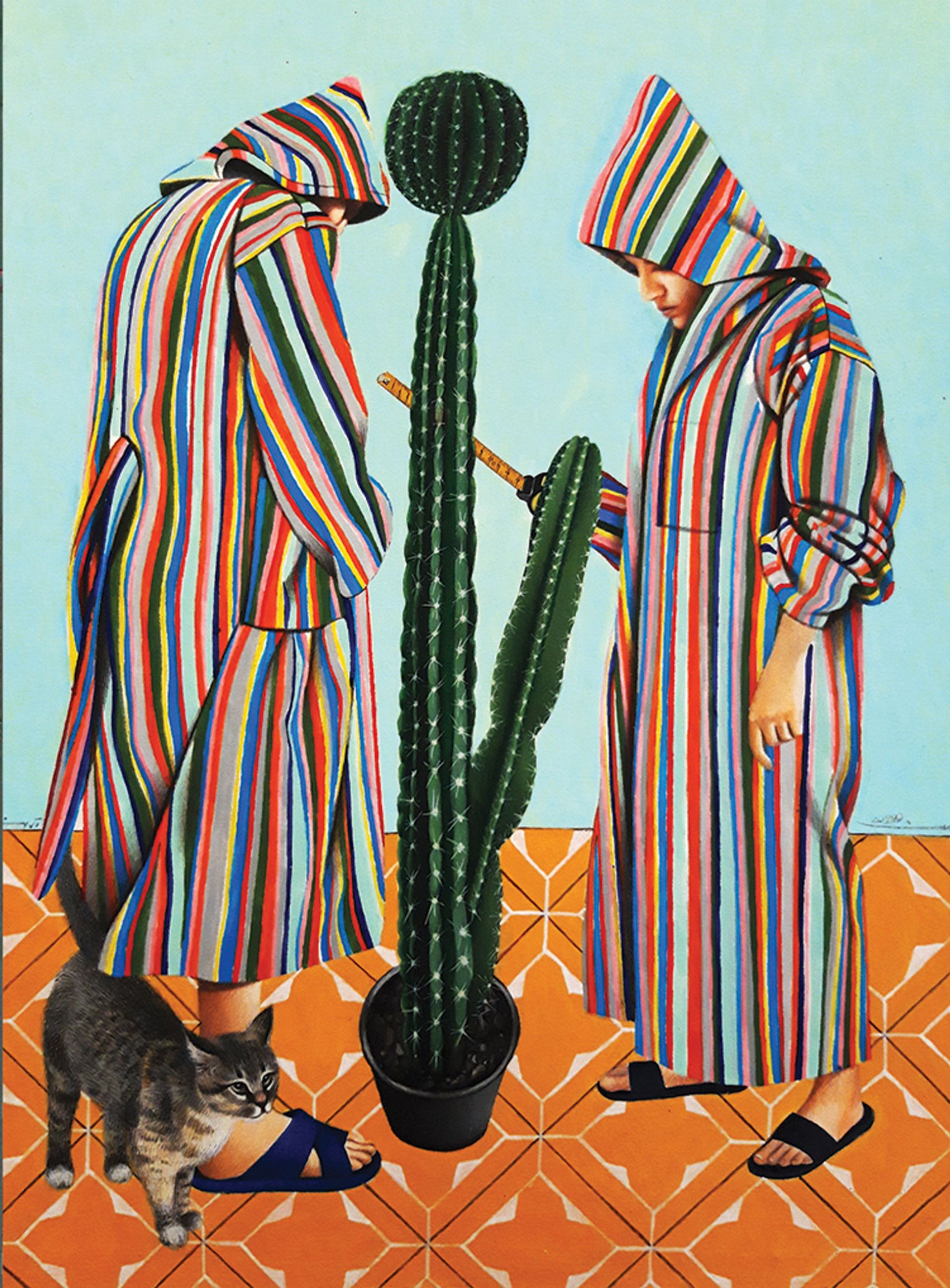Artists intent on rekindling ancient tribal art forms in the face of an increasingly cyber society will be a particular feature of the 10th edition of Brisbane’s Asia Pacific Triennial of Contemporary Art (APT). Queensland Art Gallery and Gallery of Modern Art (QAGOMA) will turn over both of its riverside buildings to the free event, which has attracted 3.7 million visitors since launching in 1993.
APT10’s curator Tarun Nagesh says the exhibition will feature a richness of materials and large structures, including a Tongan “fale”, the Tongan word for house, made of local materials. “There are a lot of weaving and ceramics and lacquer work and multimedia installations and performance and mask-making traditions—a lot of artists transforming old techniques for new generations.”
Among the 150 artists and collectives participating in APT10 are brothers Mayur and Tushar Vayeda, who were born and still live in the village of Ganjad, 80 miles from Mumbai in India. They make art in the style of their Warli tribe-—a kind of pictorial language featuring geometric human figures against a background of lush, stylised vegetation and natural formations.
The brothers paint traditional fables, as well as stories they gathered by recording local oral histories, using water-based paints on a ground made of the dung of their own cattle. One of their works, Dhartari: The creation of the world 2021, has been acquired by QAGOMA.
Indigenous craftsmanship
Other APT10 artists working with traditional materials and techniques include Maryam Ayeen and Abbas Shahsavar, whose contemporary works are grounded in the Iranian miniature-painting tradition, and Fijian master potter Veniana Maraia Paulini and her family, who are among the last active potters in the village of Nasilai. Fijian pottery traditions date back more than 3,000 years.
APT10 will also feature tepo – handwoven mats made from dried pandanus leaves, crafted by the Sama Dilaut people, who live a nomadic, seafaring life throughout the Indo-Malay and Philippine archipelagos. The geometric designs of the dyed leaf mats represent sea life and everyday objects such as ladders used by people to climb on to their houseboats. There are recent moves to introduce tepo to regional museums and collectors.

Fall in dopamine (detail), 2020-21, by Iranian artist duo and married couple Maryam Ayeen and Abbas Shahsavar © Maryam Ayeen and Abbas Shahsavar
Many APT10 artworks reference the dangers of rising sea levels, including a film and photographic work by Indonesian artists Tita Salina and Irwan Ahmett about the coastline of Jakarta Bay, where water has engulfed and submerged a mosque.
Water as a precarious resource is the issue behind an installation by Honolulu-based Kaili Chun, who collected small capsules of water from Indigenous groups across Australia and invited the people to tell stories about their relationships to water. “In the Asia Pacific region, you have some of the front lines of climate change, so naturally that’s felt in the show,” says Nagesh. In parts of the region, rising sea levels “are part of everyday life”.
• APT10, Queensland Art Gallery and Gallery of Modern Art, Brisbane, 4 December-25 April 2022


